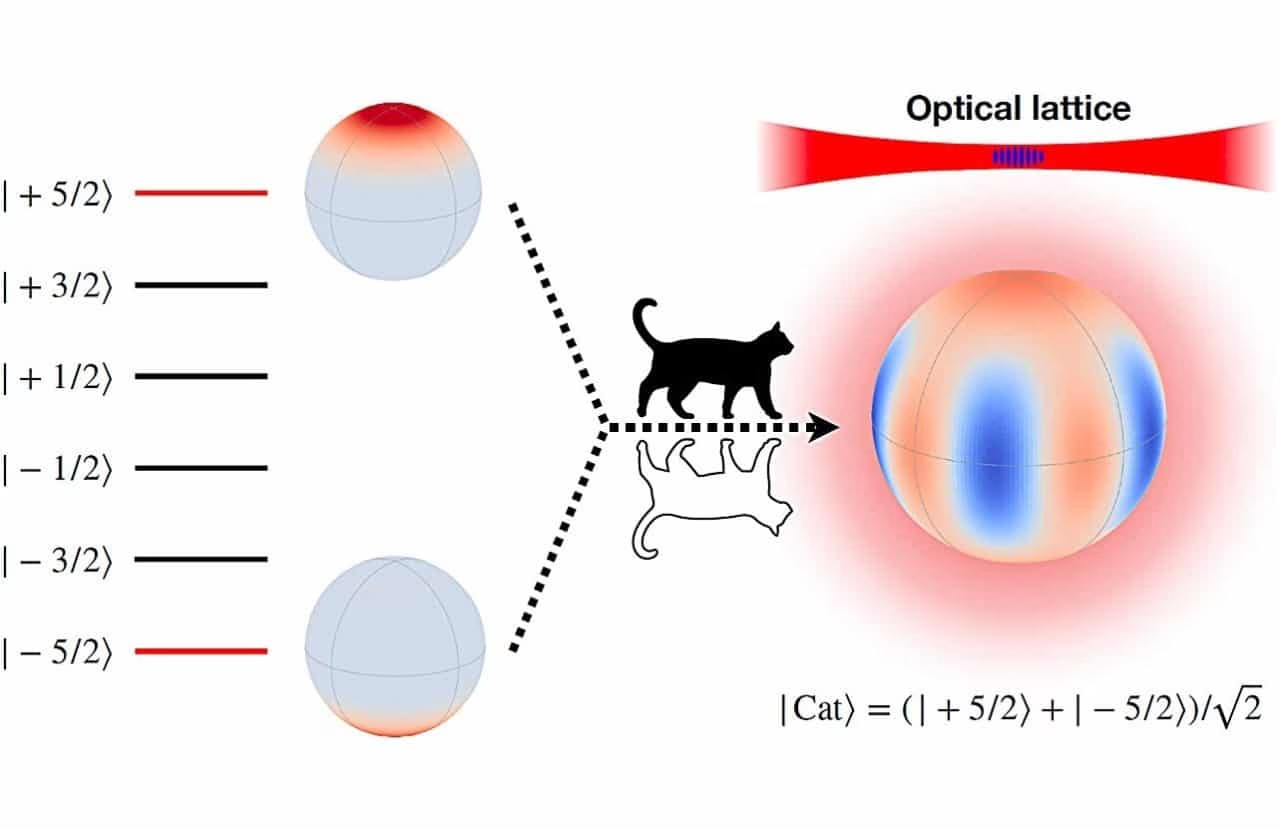Chinese researchers kept the ytterbium-173 isotope in a “Schrödinger’s cat” state for more than 20 minutes. This work brought the accuracy of measurements of the phase shift of a quantum system close to the theoretically possible limit.
Metrology is a science that deals with measurement issues, their accuracy and methods of carrying them out. In quantum metrology, the back of particles serves as a tool to measure magnetic fields, inertia, and other physical phenomena.
Chinese physicists focused on studying the case of “Schrödinger’s cat” (a superposition, the simultaneous existence of two oppositely oriented and maximally distant spin states in an atom). Such a state of atoms has unique advantages for performing precise measurements in quantum systems.
The main difficulty in applying Schrödinger’s cat states in experiments is maintaining a sufficient coherence time (a state in which the overlap of spins and a clear separation between their phases are maintained).
To overcome this problem, a research group led by Professor Lu Zhengtian ( Lu Zhengtian ) and researcher Xia Tian ( Xia Tian ) from the University of Science and Technology of China ( USTC ) used about 10 thousand atoms of the isotope ytterbium-173 (¹⁷³Yb), /2.
Scientists cooled the atoms to almost absolute zero and held them in a fixed position with the help of a laser. Under these conditions, the quantum states of atoms can be controlled with high precision, and physicists have placed each atom in a superposition state with two very distant spins: +5/2 and -5/2.
The state of superposition of spins, the Schrödinger cat, indicates increased sensitivity to the magnetic field. Additionally, it is robust to noise caused by random changes in the intensity of lasers and spatial imperfections of the lattice in which ytterbium-173 isotopes are placed.
Usually the superposition remains constant for a millisecond, but in this experiment physicists managed to maintain the “Schrödinger’s cat” state for more than 20 minutes. Sensitivity to phase shifts was checked to verify the coherence time. The phase shift is associated with the rotation of the spin vector of the atoms in superposition. This results in a change in the relative phase between states, which can be measured using a technique called Ramsey interferometry.
The results of the new scientific study confirmed that phase measurements are approaching the Heisenberg limit. This is the maximum theoretically possible accuracy of measuring the phase of quantum systems, limited by the fundamental laws of quantum mechanics. This accuracy confirms the effectiveness of the technique used and the stability of the “Schrödinger’s cat” situation.
The long-range superposition state of ytterbium-173 atoms opens new perspectives beyond the Standard Model for atomic magnetometry, quantum computing and physics research. The results of the research expand the possibilities of metrology and technologies related to quantum computing and sensors. The scientists’ article was published in the journal Nature Photonics .
Source: Port Altele
